Penmon Point, near Beaumaris, Anglesey
Tucked away on the eastern tip of Anglesey, Penmon Point makes an ideal lunch stop as part of a coastal walk (the Isle of Anglesey Coastal Path runs through it). The Pilot House cafe serves Welsh cream teas in its garden overlooking Puffin Island (half a mile offshore), the Menai Strait and Snowdonia. The Penmon lighthouse nearby sounds its melancholy fog bell every 30 seconds, an atmospheric soundtrack to a stroll along the award-winning pebble beach with its potential for porpoise and seal spotting. A short walk down the toll road (free for pedestrians) leads to the 13th-century Penmon Priory and holy well dedicated to Saint Seiriol, and an Elizabethan dovecote, all ancient, arcane and architecturally interesting.
For a longer stay, check into the Old Coastguard House; sleeps six from £895 a week in summer
Lizard Point, Cornwall
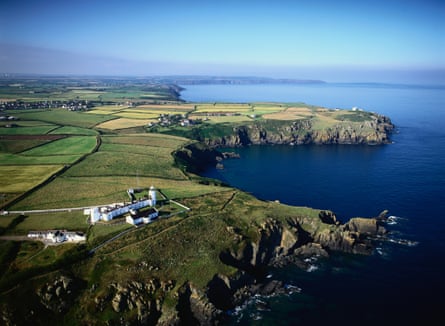
The Guardian’s product and service reviews are independent and are in no way influenced by any advertiser or commercial initiative. We will earn a commission from the retailer if you buy something through an affiliate link. Learn more.
This rocky extremity of the UK (its southernmost point) is reached by a single road, then a lonely footpath and comes to an end at the wind-whipped lighthouse. Further along, the newly rebuilt lifeboat house sits perilously at the base of a 45m cliff. Not a place for conventional seaside pleasures, then, more for marvelling at the power of the sea and the geological forces that carved the coastline into monumental rocky coves and sheer cliffs (most spectacularly at neighbouring Kynance Cove). Polpeor Café on the clifftop is the place to take in the views while munching a crab salad (or clutching a mug of hot chocolate), then pick up a piece of locally quarried, dark-green Serpentine at the stone polisher’s shop in the village.
The 37 bus route from Redruth stops at The Lizard
Rye Harbour, East Sussex
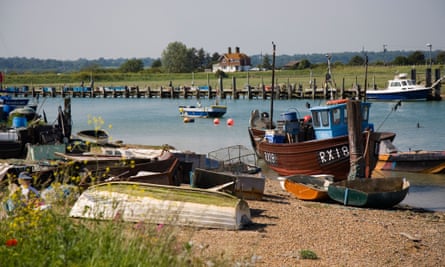
Edgier than its more-visited neighbour, Rye, but no less interesting, Rye Harbour is reached by driving down a two-mile road past industrial units and boatyards. Still a working harbour, it has its own, small fishing fleet, and hearty, fisherman-sized snacks are served at the Bosun’s Bite cafe on the quay. Pints of Shepherd Neame ales are pulled at the William the Conqueror pub and drunk amid the squawks and skirmishes of seabirds on the seawall. The Rye Harbour Nature Reserve, a short walk away, boasts 150 rare or endangered species which nest in the shingle or overwinter in the lagoons. All of which is rich subject matter for local artists who show their work in the elegant and friendly Avocet Gallery and Tea Room, which serves seasonal baking amid ceramic pots and paintings.
Nearest station: Rye, then a 312 bus to Rye Harbour
Dengie peninsula, Essex
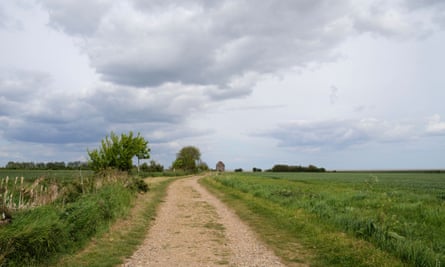
You have to walk the last half mile to the tiny chapel of St Peter-on-the-Wall, at Bradwell-on-Sea on Essex’s Dengie peninsula (turn right in front of St Cedd’s church in the village, follow East End Road as far as you can, then park). The mini-pilgrimage feels appropriate – the tiny church, built in 654 AD, is one of the oldest and most atmospheric places of worship in the UK and deserves a little reverence. As does the surrounding lonely shoreline and saltmarsh, whose muddy tussocks hop with wading birds and whose beaches are composed, in part, of yellow cockleshells. A walk on, south and east along the sea wall takes you to the pretty town of Burnham-on-Crouch, once a centre of the cockle, whelk and oyster trade, and now famed for sailing activities centred on the Royal Corinthian Yacht Club .
Nearest train station: Burnham-on-Crouch
Blakeney Point, Norfolk

The best way to arrive at Blakeney Point, a sand and shingle spit stretching out into the sea from the heart of Blakeney national reserve, is on a boat trip from Morston Quay. You not only get a chance to see grey seals basking on the sandbanks, but you disembark at the distinctive, blue Old Lifeboat House, home to National Trust rangers and a visitor centre. From there, you can explore the rare habitat and its inhabitants, which range from sandwich terns to otters and yellow-horned poppies. The more energetic might opt to walk back to Morston , a worthwhile though demanding tramp across four miles of shingle back.
Nearest train station: Sheringham, then get the CH3 bus to Morston. There is restricted access to the western end of Blakeney Point from April to mid-August, to protect birds nesting on the shingle, and from November to mid-January during the seal pupping season.
Seaham, County Durham
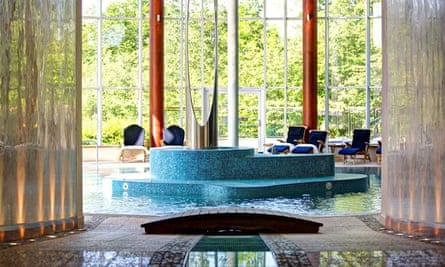
There was a time when a day out on the Durham coast seemed like a preposterous idea: known as the “black coast”, it had coal mines extending four miles out to sea and scattering their waste over a large area. The Turning the Tide initiative of 1997-2002 saw 1.3m tonnes of spoil removed, the beaches cleaned and wildlife returning. The harbour town of Seaham is a good base to explore the area and head off on the coastal path or to cycle part of the North Sea Cycle Route which goes through Seaham. The more slothful can check into Seaham Hall, a local-stately home-turned-luxury hotel, for spa treatments.
Nearest railway station: Seaham
Seacliff beach, Auldhame, East Lothian
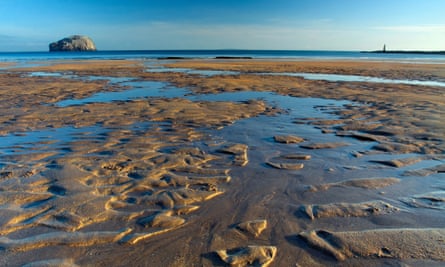
At first there, appears to be little to see or do at this wide stretch of sand and rock five miles east of North Berwick. Reached by driving down a private road (parking £2), then following a path through bushes and trees, the beach opens up and is wide, unspoilt and largely unpopulated. But then your attention is caught by Bass Rock, a volcanic plug white with gannet droppings rising like a massive whaleback from the ocean, and, further along the shoreline, the ragged outline of ruined Tantallon Castle appears unexpectedly around the headland, and a tiny harbour (said to be Scotland’s smallest) is revealed, carved out of the rocks in 1890 by the then laird.
Pittenweem, East Neuk, Fife
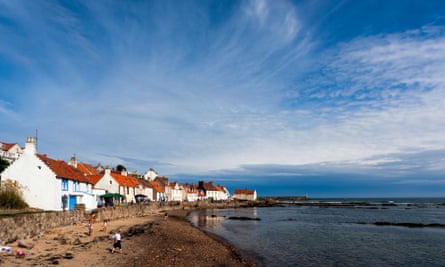
Artists have never been able to resist the charms of a fishing village, so it’s not a surprise that the red, pantiled houses, still-active harbour and winding streets of Pittenweem have drawn a resident artistic community. The village’s annual Arts Festival, at the beginning of August, showcases their work, as does the East Neuk Open Studios trail. Fresh fish is the other attraction at Pittenweem, sold at local fishmongers and on the menus of restaurants in the (equally attractive) neighbouring villages – most famously the Anstruther Fish Bar up the road and 16 West End in St Monans.
The nearest railway station is Cupar, 13 miles away. The 95 bus from Leven to St Andrews stops at Pittenweem
Caerlaverock Wetland Centre, Dumfriesshire

Every October, 30,000 barnacle geese arrive at centre on the north Solway coast having flown 2,000 miles from their Arctic nesting grounds on Svalbard island. Rangers take groups of binocular-bearing bird-watchers for “dawn flight” trips to witness the geese make their early morning sweep from the mudflats where they roost to feeding grounds inland. The clatter and commotion of the birds as they begin their flight, followed by the sight of their flypast in v-shaped skeins is one of nature’s marvels, and well worth getting up for. The 1,400-acre reserve was established by Sir Peter Scott to provide a winter home for barnacle geese, but also attracts many other types of wildlife, including badgers, whooper swans and natterjack toads.
More information at wwt.org.uk/wetland-centres/caerlaverock. The nearest station is Dumfries, nine miles away. Bus service D6A runs from Dumfries to Caerlaverock
Sandscale Haws, Cumbria
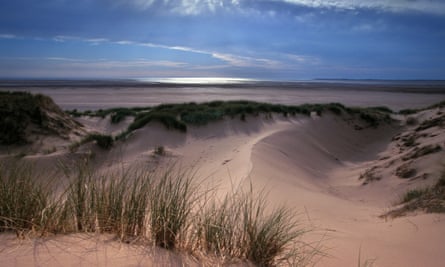
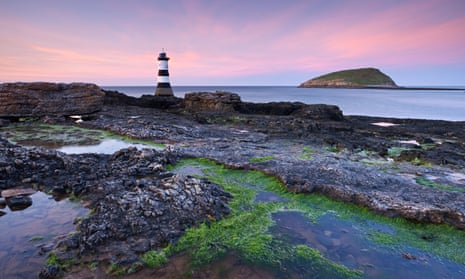
Comments (…)
Sign in or create your Guardian account to join the discussion